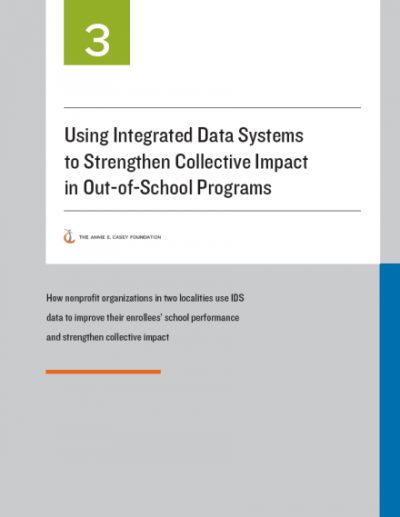Data Analysis
IDS data from school sources showed that out-of-school enrollees were more likely to be chronically absent from school and less likely to be proficient in reading and math than their peers.

This case study is one in a series of briefs that show how to invest in and use integrated data systems (IDS) in local jurisdictions to improve policies, programs and practice. This brief presents out-of-school collective impact initiatives in North Carolina and Texas and their use of data from a local IDS to improve educational outcomes for their enrollees and allocate resources more effectively.
A collaborative of youth serving agencies in Charlotte-Mecklenburg County, North Carolina, used IDS data to improve attendance and reduce chronic absenteeism among its enrollees. A consortium of out-of-school-time providers in San Antonio, Texas, learned from IDS data that their enrollees were behind their peers in reading and math proficiency improvement. The organizations revamped their programs to focus on reading and math and the local United Way consortium reallocated funding to middle and high schools where the supports were more effective.
Using an IDS to link data that non-profit organizations collect on their enrollees to school performance data collected by the local school system can help determine if out-of-school activities improve school outcomes and be able to use results to improve programs. The upshot is being able to develop collectives that can work more effectively together, partner with other organizations and allocate resources more efficiently.
We hope you'll find value in this report. We’d love to get a little information from you, which we'll use to notify you about relevant new resources.